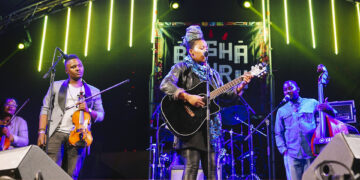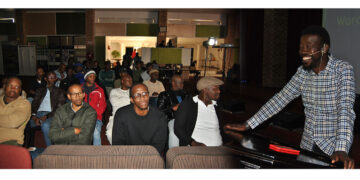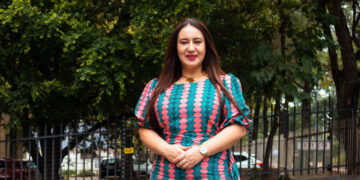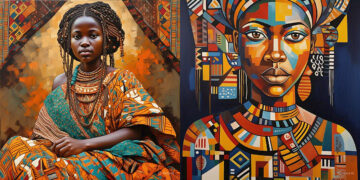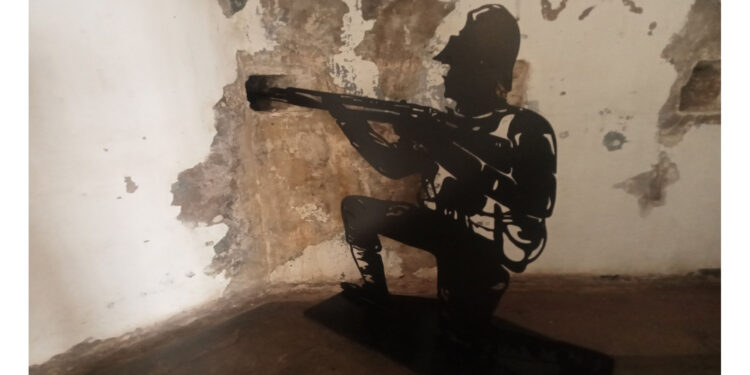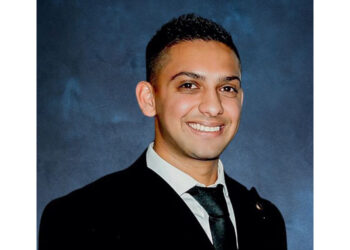It started with the government announcement, in 1976. The youth from Soweto was said to have emerged through the back-door of the Soweto matchbox house that was their home. Their youthful faces were lined with animated anxiety. It was winter and the sun had not yet set. Nevertheless it was almost dark in the township. The dull red ball of the sun hung hardly visible, behind a certain coal smoke emitted by countless chimneys and braziers. One medical officer at a health seminar cynically remarked that in Soweto everybody was a passive smoker. This was because of the heavy blanket of smoke that always enveloped the township, especially during the winter months.
Dubbed by some as the largest city in Africa south of the equator, Soweto has ironically, never had any significant history of protests before 1976. The world heard of Sharpeville and Langa long before Soweto emblazoned itself onto headlines of the global press. But now it had become a permanent feature in the news, billed as a symbol of youthful resistance to apartheid.
It was sparked by an announcement by the Minister of Bantu Education that henceforth the ‘black children would be taught certain subjects in Afrikaans, whether they liked it or not’. That is what gave birth to June 16 or rather Youth Day’. Soweto is a typical bastard child of apartheid. It was established in the early 20th century as an informal settlement for African miners and their families. They were lured from their villages to the area by the great gold rush in Johannesburg and its outlying areas. It gained official recognition in the 1940’s and the early 1950’s when in terms of apartheid laws: African residents from townships of Alexandra, George Goch and Sophiatown were to be forcefully removed and dumped there. Overnight, these areas were declared “black spots” by government decree and thus their occupants had to be removed, to make way for white residential areas. The name Soweto is a simple an acronym for South West Townships.
In a quite strange way, Soweto represented different interests to various groups. To an industrialist, Soweto was his labour reservoir. A place to send trucks early every weekday, to come back filled to the brim with grinning faces of cheap labour. To white people in the suburbs, it was a place that amazingly swallowed all those black people who, during the day, littered the pavements of Johannesburg.
The Afrikaans issue was merely a fuse that ignited the resentment that had been simmering since the early 1950’s when the Bantu Education Act was introduced and implemented. This has created a lot of logical problems in black schools, whereby in 1976, most teachers were themselves not sufficiently educated to teach others in that language. The students of Soweto, led by Tsietsi Mashinini, were just one of the many regiments that fought the apartheid government on many fronts and suffered extensive losses. When they marched, on that historical morning of 1976, they were not the first, nor would be the last of casualties in the fight to unseat the evil and repressive machinery of the apartheid regime.
It would be a long time before the last echoes of gunfire had died over Soweto and other parts of the country. June 16 is not just to be celebrated by a remembrance of the youth that died fighting the struggle of educational emancipation in South Africa. Is the struggle over for the youth of South Africa? Definitely not! With the horrific statistics on drug abuse; alcoholism; teenage pregnancy and youth unemployment, the road ahead looks pretty dim. And, do we still blame the government in this instance? Surely not. The goal now is to unlock potential among young people and for them to lay hold of opportunities that are at hand, for, a time will come where nobody will have the leisure to point fingers.
Noluthando Magwaza
Soweto Sunrise News
Pharma Dynamics’ Heart-healthy Cookbooks clinches top spots at Global Cookbook Awards
South African heart-health is in the global spotlight this month, with Pharma Dynamics celebrating two major honours at the 30th Gourmand...




